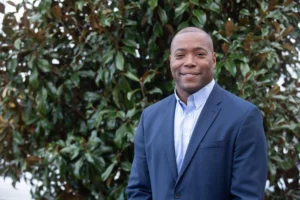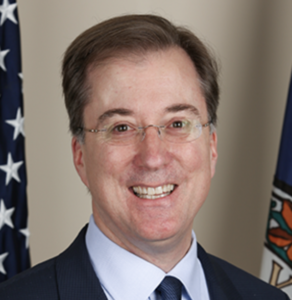
by Dick Hall-Sizemore
The 2024 General Assembly has taken care of a piece of unfinished business. It has passed a bill to set up a framework for the sale of marijuana.
The 2021 General Assembly made it legal for individuals to possess a small amount of marijuana. However, there was not enough time to craft consensus legislation to regulate its sale. That task was delayed until the next year.

That plan was upended when Republicans won a majority of seats in the House of Delegates for the 2022 and 2023 sessions. Any bill to establish a framework to regulate the sale of marijuana was killed.
The result was a strange state of limbo. It was legal to possess marijuana, but it was not legal to sell it. A black market flourished. A Cannabis Control Authority (the Authority), with a governing board, was created, but had nothing to regulate. (When the term “Authority” is used in this article, the term includes the administrative agency and the governing board.)
With Democrats back in the majority in both houses in 2024, one of their top priorities was to legalize the sale of marijuana and create a framework to regulate it and tax it.
One of the major concepts that proved to be a sticking point in the past was the desire to provide some equity in the establishment of a legal market in marijuana. As reported by the Joint Legislative Audit and Review Commission (JLARC) in its analysis of the legalization of marijuana, despite the use of marijuana by blacks and whites being similar, the arrest rate for blacks for marijuana possession was 3.5 times higher than the arrest rate for whites, and the conviction rate was 3.9 times higher. The argument was that, because blacks had been disproportionately affected when the possession and sale of marijuana were illegal, they should be provided an advantage in reaping the benefits of the legalization of marijuana.
The legislation that was enacted in 2021 included several provisions directing the Authority to use social equity criteria in establishing preferences and priorities for issuing licenses
In addition, the 2021 legislation set up two funds to deal with the equity issue. The base fund was the Cannabis Equity Reinvestment Fund. Money in the Fund was earmarked for the following purposes:
1. Supporting persons, families, and communities historically and disproportionately targeted and affected by drug enforcement;
2. Providing scholarship opportunities and educational and vocational resources for historically marginalized persons, including persons in foster care, who have been adversely impacted by substance use individually, in their families, or in their communities;
3. Awarding grants to support workforce development, mentoring programs, job training and placement services, apprenticeships, and reentry services that serve persons and communities historically and disproportionately targeted by drug enforcement.
4. Contributing to the Virginia Indigent Defense Commission established pursuant to § 19.2-163.01; and
5. Contributing to the Virginia Cannabis Equity Business Loan Fund established pursuant to § 4.1-1501.”
The other fund was the Virginia Cannabis Equity Business Loan Fund, referred to above. Its statute stipulates that “moneys in the Fund shall be used solely for the purposes of providing low-interest and zero-interest loans to social equity qualified cannabis licensees in order to foster business ownership and economic growth within communities that have been the most disproportionately impacted by the former prohibition of cannabis.”
The Cannabis Equity Reinvestment Fund is administered by its own board. The Virginia Cannabis Equity Business Loan Fund is administered by the Authority.
One factor that concerned advocates for the legalization of marijuana sales was the presence of several major pharmaceutical companies that already sold marijuana for medical use in the commonwealth, which is legal. Obviously, those companies would have a head start in obtaining licenses when the sale of marijuana for recreational use was legalized.
There were two approaches introduced. One was incorporated in SB 448, introduced by Sen. Aaron Rouse (D-Virginia Beach). It would authorize the Authority to begin issuing licenses on July 1, 2024, but would not allow sales to begin until Jan. 1, 2025. The delay was intended to enable smaller companies to get established.
The competing proposal was included in SB 423, introduced by Sen. Adam Ebbin (D-Alexandria) and HB 698, introduced by Del. Paul Krizek (D-Alexandria). Under that framework, the pharmaceutical companies could start selling recreational marijuana on July 1, 2024. However, each of those companies, in exchange for being allowed to start selling immediately, would be required to mentor or “incubate” six small businesses to help them get up and running. The pharmaceutical companies also would have to contribute $1 million each to a grant fund for small businesses. The incubated businesses would have been able to apply for licenses on Jan. 1, 2025 with other businesses being able to apply for licenses on July 1, 2025.
The Senate adopted Rouse’s bill and the House, Krizek’s bill. After much maneuvering and much negotiation, the patrons emerged with a compromise. Under the substitute compromise, the Authority could begin issuing licenses on Sept. 1, 2024, but retail sale of marijuana could not begin until May 1, 2025.
Both the original and final bills deleted the terms “diversity, equity, and inclusion” and “social equity” in current law and substituted the term “micro business.” A “micro business” is defined as one that is at least 66 percent owned and controlled by a person or persons who:
- Has been convicted of a misdemeanor marijuana offense;
- Is the parent, child, sibling, or spouse of someone who was convicted of a misdemeanor marijuana offense;
- Have lived for at least three of the past five years in a historically economically disadvantaged community;
- Have attended for at least five years a public elementary or secondary school located in a historically economically disadvantaged community;
- Have received a federal Pell Grant or attended a college or university for at least two years at which at least 30 percent of the students, on average, are eligible for a federal Pell Grant; or
- Is a veteran of the armed forces of the United States.
The legislation requires the Authority to establish standards and requirements that provide preference in the application process and the levy of fees for applicants who meet the definition of micro business. Furthermore, the legislation requires the Authority to “establish a process that prioritizes such applicants based on the number of [micro business definition] categories met and ensures that increased priority is provided to applicants that meet the most criteria categories.” (See the amendments to Sec. 4.1-606 of the Code, beginning on page 8 of the bill.)
It would not be just retailers who would be involved in the sale of recreational marijuana. In addition to 350 retail facilities with a maximum size of 2,500 square feet of retail floor space, the Authority would be able to issue licenses to 100 processing facilities, and 125 “cultivation” facilities. Those latter licenses would be spread among five tiers, ranging in size from 2,000 square feet to 70,000 square feet.
Finally, there is the question of money. Applicants for licenses must pay application fees, to be set by the Authority. The revenue from those fees will be used to support the operations of the Authority.
More importantly, the legislation provides for a state tax on the sale of marijuana and marijuana-related products. The state tax will be 8 percent. The regular sales and use tax will not be applicable to marijuana sales. Instead, there will be a 1.125 percent sales tax. Localities may impose a 2.5 percent tax. The legislation specifies how the state revenue shall be used. Sixty percent from the 8 percent tax is to be deposited in the Cannabis Equity Reinvestment Fund. The remainder is allocated for Pre-K programs (10 percent); facilities to treat substance abuse disorders (25 percent); and public health programs (5 percent). The revenue from the 1.125 percent sales tax is to be distributed to localities for education. See the fiscal impact statement for the summary of the use of the revenue.
To project the amount of revenue that might be collected from the state taxes, the Dept. of Planning and Budget started with the range of amounts developed by JLARC and adjusted them, based on several factors. The 8.1125-percent state taxes is projected to produce $7.3 million in FY 2025. By FY 2030, that amount is projected to grow to $87.85 million. The fiscal impact statement does not attempt to project revenue from the 2.5 percent local option tax because it was not known how many localities would adopt the tax or when they would adopt it.
There is another unknown when it comes to projecting revenue. The legislation authorizes any county, city, or town to have a referendum on whether retail facilities to sell marijuana shall be prohibited in the jurisdiction. However, any such referendum must be held, with results certified, by Dec. 31, 2024. The only referendum allowed after Jan. 1, 2025, would be one in a locality in which the voters voted in 2024 to prohibit the location of retail marijuana stores in that locality. In summary, voters have only one chance, in 2024, to say “no” to the selling of marijuana in their locality.
The passage of the substitute consisted of a feature not uncommon with complex bills being considered in the waning days of the Session. As The Washington Post so well described it: “The substitute bill landed on Senate desks Wednesday afternoon in the form of a 185-page floor substitute, the salmon-colored pages still warm from the printer.” The Senate then proceeded to adopt the substitute and pass it.
The compromise bill passed the Senate on a vote of 21-18. The only Republican voting for it was Sen. Christie New Craig of Chesapeake. The House passed the bill on a party-line vote of 51-47. The bill next goes to Governor Youngkin who has repeatedly said that he does not “have a lot of interest” in legislation legalizing the sale of marijuana.
I am indebted to The Washington Post and Cardinal News for their coverage of this legislation that minimized the amount of digging through the bills I had to do. Their stories can be found here:
Virginia considering rival bills that would create retail market for cannabis – Cardinal News
https://www.washingtonpost.com/dc-md-va/2024/02/28/virginia-marijuana-market-house-senate-bill/
https://cardinalnews.org/2024/02/22/cannabis-backers-reach-compromise-bill-heads-to-house-floor/
My Soapbox
In a previous article, I took issue with a fiscal impact statement (FIS) prepared by the Dept. of Planning and Budget. In contrast to that FIS, the FIS for the legislation legalizing the sale of marijuana is a model of what a good FIS should be. So, I need to give credit where credit is due.
The marijuana sales FIS does not provide a long, detailed summary of the bill’s provisions. That is not its function. It clearly sets out the administrative costs that will be incurred by the Authority, but does not blindly accept the Authority’s request. For example, the Authority said that it would need a one-time general fund appropriation in the first year to hire 55 additional positions it feels it would need to establish the licensing operation. The author of the FIS does not dispute the need for the positions but does take issue with the need for a general fund appropriation. He or she notes, ”it is unclear how quickly the CCA is able to hire these positions in Fiscal year 2025 or if all of these positions are needed immediately.” The author goes on to suggest an alternative method of paying for those positions: “An alternative might be to provide a treasury loan or a line of credit to CCA to cover the costs of these positions, assuming that future revenues could repay these loans.”
The fiscal effects on other agencies are briefly identified.
In the revenue section, the FIS uses the mid-range of the high and low projections produced by JLARC and applies a few other adjustments to come up with a revenue projection. All the assumptions used in the development of the projections are clearly laid out.

Leave a Reply
You must be logged in to post a comment.